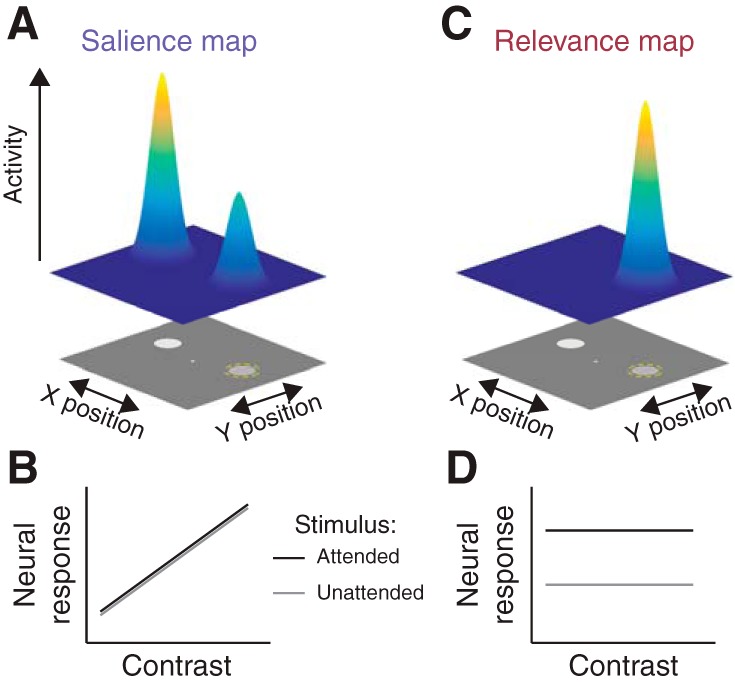Fig. 1.

Identifying maps of visual salience and behavioral relevance. A: we define a salience map as a map of the visual scene where each position on the map indexes the importance of the corresponding location within the scene based on image-computable features, such as contrast, motion, or distinctness from the background or other scene items. Accordingly, activity within a salience map should scale with the visual salience of local scene elements. For an example scene, in which two stimuli of differing contrast are presented and a participant is cued to attend to one (dashed yellow circle), a salience map would show higher activation at visual field positions corresponding to higher contrast, even if those elements of the scene are not relevant for behavior. B: for a given location in the scene, activation in a pure salience map would scale only with image-computable features, such as contrast (shown). C: we define a relevance map as a map of the visual scene where each position on the map indexes the behavioral relevance of the corresponding location. In this example scene, the relevance map would only show activation at locations relevant to the behavior of the observer, independent of their visual salience. This requires that visual locations corresponding to highly salient but irrelevant stimuli are not reflected in a pure relevance map. D: a location within a pure relevance map would show high activity when the corresponding position is relevant for behavior and low activity when it is irrelevant. Importantly, a cortical map of visual space can reflect a combination of both visual salience and behavioral relevance by virtue of its position within the visual processing hierarchy.
